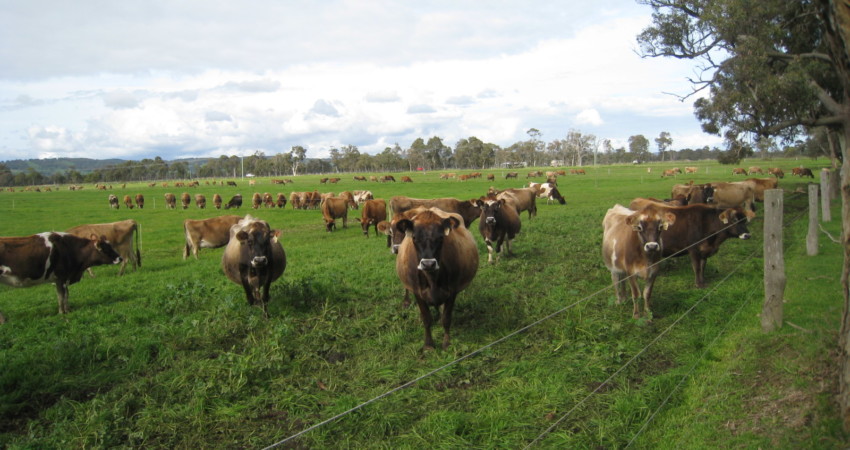

The world of grassland management and different grazing systems can get very technical very quickly, but these steps are aimed to help those in their first year of moving to rotational grazing and trying to get more from grass.
“Ultimately all you are trying to do is match your stocking rate to your grass growth,” says Gareth Davies of Gareth’s Grassland Advisory Service.
Planning a rotation (route) for your stock will depend on various factors – how many cows you have and their size, influencing demand, how many bulling groups you run and your farm type. If you have a farm with smaller fields, they might work as paddocks, or if your grass fields are larger, they may need breaking up with fencing.
When running several bulling groups, each group would have their own allocated area and their own set of paddocks, which they will rotate around. Unless grass growth circumstances require it, you would not move the groups from one set of paddocks to another.
The difficult thing in the first year is that you won’t have shut up fields or paddocks in a set order as would happen in a rotational grazing system. This means that you won’t have the staggered growth across paddocks that rotational grazers would typically see before turnout.
Therefore, in year one, you need to have an area/field where you can hold cattle for a time (approximately one week to 10 days) to let grass growth pick up in the first paddock/field you plan to turn them into.
This might mean you need to supplement them for a short time, while holding them back from entering the grass system, while grass ‘cover’ builds.
Grass cover is measured in amount of dry matter available per hectare (DM/ha) and the target should be for that cover to sit between 2,500 and 3,000 when cows enter the paddock.This can be measured with a plate metre or sward stick, but for simplicity, can also be talked about in terms of the height of the grass.
Equally important is the amount of grass left behind, which is called the residual. In cover terms, this should be around 1,500 DM/ha, which is 4cm in height and roughly the height of a golf ball. At this height, the grass will recover well and have time to grow to the third leaf stage before it is grazed again.
If it isn’t grazed hard enough, you will get ‘stemmy material’ accumulating at the base of the plant, which leads to a decrease in quality.
Taking a 24-day rotation
The rotation length is the number of days it would take for the mob of cattle to go through all their allocated paddocks. This number can vary depending on geographical area and farm type – on farms where grass growth is very strong, or in peak growth season, this may need to be shorter. Alternatively, if in an area where grass grows more slowly, a slightly longer rotation might be necessary.
However, 24 days is a good starting point because in many areas any longer than that and quality would start to deteriorate. And it can work with various different numbers of paddocks:
If you have six paddocks, each one will be grazed for four days. If you have eight paddocks, each one will be grazed for three days. And if you have 12 paddocks, each one will be grazed for two days. Four days is the maximum grazing duration wanted because of the all-important rest period in between grazing.
On a system with six paddocks grazed for four days, the first paddock would have 20 days’ rest for the grass to grow before it is grazed again. With more paddocks, each paddock would get a longer rest period.
To work out the size of the total area you need and the size of individual paddocks, you need to be able to work out the demand of the livestock. Throughout the season there will be fluctuations in grass growth and the system needs to adapt to that.
If grass growth is poor and covers are not building quick enough, some supplementation with forage or concentrate may be required or extra paddocks need to be introduced to extend the length of the rotation. Conversely, if grass growth is rapid then it may mean taking paddocks out for one rotation or more.
For example, on a six-paddock system, if grass is growing rapidly and by the time you are grazing paddock number four, paddock one is back at optimum cover , then leave paddocks five and six and restart the rotation at paddock 1.
Paddocks five and six can then be grazed with other stock on the farm, such as sheep or store cattle, or cut for silage.
 Contact Jaguza Support
Contact Jaguza Support